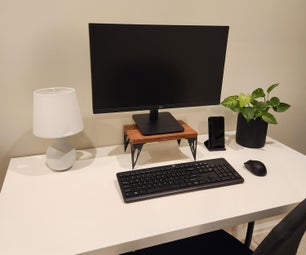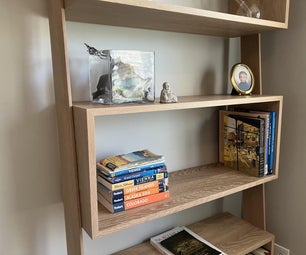Introduction: Homemade OneWheel for Half the Price
I started this project in mid 2016 with one goal: Since the OneWheel is almost $1500 USD, i decided that I would create my own version of the OneWheel for much cheaper. My story starts when I saw an episode of Mythbuster's where Adam Savage rides on a OneWheel while pushing a shopping cart. At that moment, I knew that I wanted to have one. After finding out that it was a bit too expensive, I set out to build one myself. Since I was on my school's robotics team, I decided to use vex motors for this project.
Here is the parts list(and where to get them):
Vex Motors: http://www.vexrobotics.com/vexpro/motors-electronics/217-2000.html
Vex Motor Controllers: https://www.vexrobotics.com/217-9090.html
Vex Pulleys/Gears: https://www.vexrobotics.com/vexpro/motion/belts-and-pulleys
Arduino: https://store.arduino.cc/usa/arduino-uno-rev3
Axle+Key
Bearings
Wheels: Just some handtruck wheels
Batteries(12V, 12 Ah)
Electronics
Accelerometer:
Buttons:
Wires
Prototype Shield
3 wire cables
220 Ohm resistors
Various nuts/bolts according to how you build the system
Step 1: Building the Frame
Step 2: Adding the Wheels(Steps #-#)
Once I bought the truck wheels, I bought the keyed axle. Depending on where you buy it from, it may be 6 feet tall. Cut it to the length you need. You will also need a spacer to separate the two wheels in order to get spacing correct. My spacer was 1.25" wide and 4" long. I also recommend supporting the frame on two sides while you do this so that it is easy to access and maintenance the system.
Step 3: Axle First
Step 4: Add the First Belt Gear
Also, don't forget to put the belt onto the gear before putting the gear onto the axle
Step 5: Add the First Wheel
Step 6: Spacer and Second Wheel
When adding the spacer and second wheel, try to set the spacer into where it will eventually be on both wheels and then lift the wheel into place. This should keep it in.
Step 7: Push the Axle Through, and Add the Second Gear
The second gear has the screw and nut sanded off of a section so that it will fit between the bearing and the wheel
Step 8: Add the Key
First, line up the wheel keyslot and the axle keyslot so that the key can be inserted. Continue to line up the gears and wheels until the key slides all the way through.
Step 9: Finishing Up...
Now, hammer the axle all the way through the other side and cap it off with a collar
Step 10: Adding the Motors
In order to add the motors onto the skateboard, I had to 3d print some mounts and screw them into the board using some bolts. I used the circular mount for the back of the cim motors, and the square mount for the gearbox. I used a nut and a bolt for the circular mount and a screw and a bolt for the square mounts. I was able to use the circular mount from someone else on Thingiverse, but I designed the square mount myself.
The links to the files are:
Square mount: https://www.tinkercad.com/things/2IG8Wll62z6-versa-mount
Circular mount: https://www.thingiverse.com/thing:438162
While testing the motors under full power, I accidentally hit my hand against the wheel which was moving at around 30 mph and it left a nasty mark on my wrist.
Step 11: Adding Bumpers
I noticed while testing that when I tilted all the way to the right, I would hit the batteries, so I designed a bumper that allows me to hit the ground without damaging any internal components. Simply attach 4 of these to the edges of the board through the 6 screwholes. Do not drill into the footpads however because this will make it difficult to remove later. I recommend drilling pilot holes because this will make it easier to drill in the screws.
Step 12: Building the Batteries
I built these two batteries by tearing apart old Vex EDR rechargeable batteries and converting the cells from 7.2V to 12V. Because the batteries had 6 cells each cell was 1.2V. This means that I needed 10 cells in series per 12V cell. However, these cells only have 3 Amp hours and I need 12. So I needed to wire up 4 3Ah cells in parallel to get the full 12Ah i needed. With some calculations thanks to this website, I was able to find out that each battery can supply about 45 minutes of power.
Step 13: Building the Circuit Board
I started with a Sparkfun Prototype shield v5 and added the functions I needed:
1. Accelerometer
2. Motor Ports
3. Button Ports
I have wired them up according to the diagrams above. I also added pins on the sides that can fit into the native arduino headers. Feel free to change the layout as you wish, but I recommend putting the accelerometer on the middle section with the connected pinholes.
Step 14: Wiring Up the System
While wiring, it is important to think about layout. However you layout is up to you, but my layout is above. Space was tight, so that constraint heavily impacted my layout. Another thing to consider is how to connect all of the different systems. I used a unified system kit which allowed for easy plugging and unplugging.
Step 15: Programming
I have programmed this skateboard to be responsive to how much I tilt in one direction. The code uses input from the accelerometer and converts it into a motor range. Because if I were you I wouldn't want to code this from scratch, I have attached a link to the code: https://pastebin.com/9s0h7P7x









